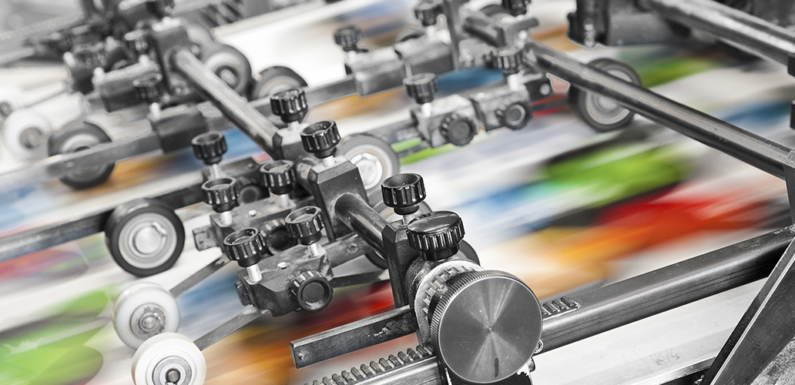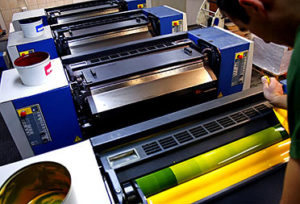
In today’s modern age, businesses have a multitude of printing options. There’s digital printing, screen printing, and there’s letterpress printing – just to name a few! As a business owner or operator, it’s important to learn which type of printing is best for your specific needs, as each type of printing has its own advantages and disadvantages.
Offset Printing, which was around well before some of the newer printing types – such as digital printing – is a great option for many projects.
Let explore the pros and cons of using offset printing machinery:
What makes offset printing unique?
Offset printing is a unique printing method because it has been around for quite some time. In existence since 1875, offset printing is an old-style technique where images are inked onto plates, which then transfer the ink to rubber, which is then rolled onto paper. It’s a successor to lithograph printing, and creates a high-quality product, for large volume projects.
 Why is offset printing better than other printing techniques?
Why is offset printing better than other printing techniques?
Offset printing is better than other printing techniques because it is a cost-effective printing method; as quantities go up, costs go down, making offset printing ideal for big jobs. It also produces a consistently high-quality image, with sharper output than a letterpress printer, due to the rubber blanket that transfers the ink to the paper. Offset printing plates have a longer lifespan, because of their offset nature, the printing plate never connects with the printing surface.
Offset printing can be used with a variety of materials, such as paper, wood, cloth, leather, and even plastic! Also, you can control the amount of ink on the roller easily, using screw keys. This maintains an even ink level to help minimize wasted prints, which you can’t do with direct printing.
This versatility and efficiency is seen in many aspects of offset printing and is part of why offset printing is so advantageous.
In what ways is offset printing worse?
While offset printing has so many pluses, there are some drawbacks. When compared to rotogravure or photogravure, offset printing will produce a slightly lower quality of an image. Also, compared to digital printing, offset printing has very high costs and set-up times, making it ideal for small printing jobs.
Another concern with offset printing is the printing plated. Because they car made from anodized aluminum, they are susceptible to chemical oxidation. In order to avoid this, they will need extra care and maintenance, adding to the convenience aspect of offset printing.
When does offset printing make sense?
If you’re printing books, brochures, magazines, or newspaper and newsletter, offset could be the right way to go. For high quantities, it provides a cost-effective solution. You’ll get a professional looking product, at a very reasonable price.
For specialized print jobs, offset printing can accommodate special materials. Offset allows you to print on many more materials than any other printing technique. If your project is on the unique side, offset printing could be a good choice.
Like all printing methods, there are good and there are bad parts, however, offset printing is largely a great choice. All things considered, offset printing fits the bill for most types of print jobs. However, whether or not it’s the right technique for your business will depend entirely on what you’re looking for.
Looking for expert advice? Contact Advanced Printing Technology today. With years of industry experience, APT is well trained to answer all your questions and help you find the right printer for the job! Check out our used printing presses for sale now.


